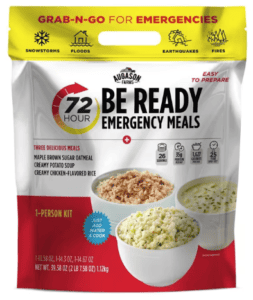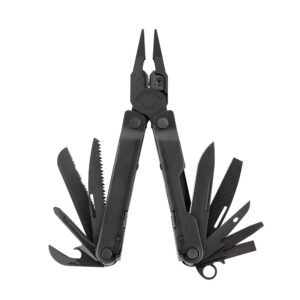Hey there, fellow preppers and survival enthusiasts! If you’re new to the prepping game or simply want to update your knowledge, you’re in the right place. Today, we’re diving deep into the essentials of the much-talked-about bug-out bag.
Introduction
First things first—what’s a bug-out bag, and why do we need one? Think of it as your ultimate escape kit during emergencies. Be it a natural disaster or a SHTF (Stuff Hits The Fan) scenario, having a well-prepared bug-out bag can literally be a lifesaver.
The Essentials of a Good Bug-Out Bag
A brief explanation of the primary purpose of the bag:
This isn’t your average backpack for a weekend trip. It’s your ticket to survival when things go south. Everything you pack should help you sustain and protect yourself for a minimum of 72 hours, though longer is always better.
Importance of weight and mobility:
I can’t stress this enough—keeping it light and manageable is crucial. If you can’t carry it or move quickly with it, what’s the point?
1. Water Purification System
 Differentiating between water filters and purification tablets:
Differentiating between water filters and purification tablets:
While both these items ensure you get clean drinking water, they work differently. Filters, like straw filters, remove contaminants. On the other hand, purification tablets kill viruses and bacteria. Both have their place in your emergency preparedness.
Importance of clean drinking water in survival situations:
Without clean water, survival beyond a couple of days is tricky. It’s not just about quenching your thirst but also about maintaining hygiene and avoiding waterborne diseases.
My REVIEW Post about the LifeStraw Personal Water Filter…
2. Compact Food Rations
 Benefits of freeze-dried meals and high-calorie bars:
Benefits of freeze-dried meals and high-calorie bars:
Easy to pack, lightweight, and with a long shelf life—freeze-dried meals are a godsend. Throw in some high-calorie bars, and you’ve got energy on the go.
Consideration for weight and nutritional content:
It’s a balance game. You want enough calories and nutrients without overburdening yourself.
My REVIEW Post about the Augason 72-Hour Be Ready Emergency Meals…
3. First Aid Kit
 Basics every kit should include:
Basics every kit should include:
Bandages, antiseptics, pain relievers—you name it. Don’t forget tweezers, scissors, and some gauze.
Importance of personal medications and knowledge of first aid procedures:
Got a prescription? Pack it in. And while you’re at it, maybe take a basic first aid course? It’s all fun and games until someone gets a cut.
4. Multi-Tool or Swiss Army Knife
 Highlighting the versatility of a good multi-tool:
Highlighting the versatility of a good multi-tool:
From opening cans to fixing small gear breakdowns, a trusty multi-tool is a must-have.
Practical uses in survival situations:
You might need to cut something, fix a piece of gear, or even do minor medical procedures. You never know.
5. Compact Shelter and Warmth Supplies
 Introduction to space blankets, bivvy sacks, and compact tents:
Introduction to space blankets, bivvy sacks, and compact tents:
Space blankets reflect your body heat, keeping you warm. Bivvy sacks and compact tents? Your shield against the elements.
The importance of staying warm and dry:
Hypothermia is no joke. Always prioritize your body temperature and shelter.
6. Fire-Starting Tools
 Differences between lighters, waterproof matches, and ferrocerium rods:
Differences between lighters, waterproof matches, and ferrocerium rods:
Each has its merits. Lighters are quick, matches are reliable, and ferro rods? Well, they can strike a spark even when wet.
Basic fire-starting techniques and safety precautions:
Always have some tinder, start small, and, please, remember safety first.
7. Reliable Flashlight and Extra Batteries
 LED vs. traditional bulbs:
LED vs. traditional bulbs:
LED wins, hands down. Longer lifespan, more durable, and brighter.
The case for hand-crank or solar-powered flashlights:
Batteries die, but the sun and a bit of elbow grease? Those are forever.
8. Navigation Tools
 Importance of a physical map and compass:
Importance of a physical map and compass:
Your phone’s GPS won’t always be there. Old school is cool—and reliable.
Digital alternatives and their limitations:
Sure, there are apps and devices, but remember, they’re battery-dependent.
9. Signaling Equipment
 Whistles, signal mirrors, and flares:
Whistles, signal mirrors, and flares:
Want to be seen or heard? This trio has your back.
When and how to use them effectively:
Daytime? Mirrors. Night? Flares. And a whistle? Anytime you need to make some noise.
10. Personal Defense Items
 Non-lethal vs. lethal options:
Non-lethal vs. lethal options:
Pepper sprays, tasers, or the trusty knife. It’s all about what you’re comfortable with.
Importance of training and local legal considerations:
Know your gear, practice with it, and always—always—check the local laws.
Bug-Out Bag Maintenance and Rotation
Regularly checking your bag ensures you’re not caught off guard. Fresh food, working gear, and updated meds make all the difference. Remember, a stitch in time saves nine!
Conclusion
Alright, pals, we’ve covered quite a bit today! From essentials to the nice-to-haves, it’s all about being prepared. Tweak this list based on your needs and remember—practice makes perfect.
FAQ
Q: How often should I check my bug-out bag?
A: At least twice a year. Seasons change and so do your needs.
Q: Can I include personal items?
A: Absolutely! Personal documents, a bit of cash, or even a family photo—whatever keeps you grounded.
Q: Is there a one-size-fits-all bug-out bag?
A: Nope. It’s all about personal needs and preferences. But our list? A darn good place to start!
Stay safe out there and happy prepping!

